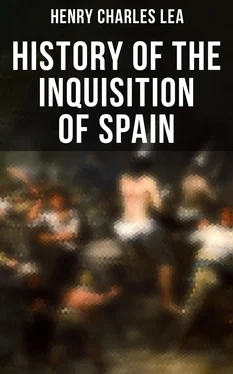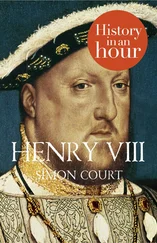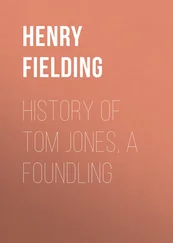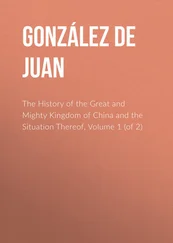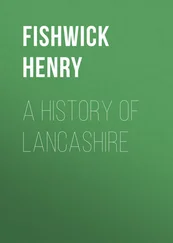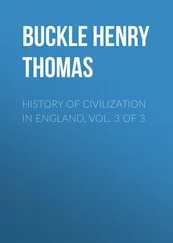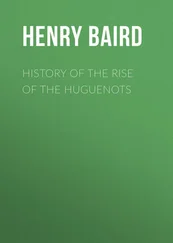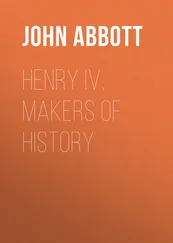Henry Charles Lea
History of the Inquisition of Spain
Published by

Books
- Advanced Digital Solutions & High-Quality eBook Formatting -
musaicumbooks@okpublishing.info
2020 OK Publishing
EAN 4064066393359
Volume 1
Volume 2
Volume 3
Volume 4
Table of Contents
BOOK I. ORIGIN AND ESTABLISHMENT.
CHAPTER I. THE CASTILIAN MONARCHY.
CHAPTER II. THE JEWS AND THE MOORS.
CHAPTER III. THE JEWS AND THE CONVERSOS.
CHAPTER IV. ESTABLISHMENT OF THE INQUISITION.
CHAPTER V. THE KINGDOMS OF ARAGON.
BOOK II. RELATIONS WITH THE STATE.
CHAPTER I. RELATIONS WITH THE CROWN.
CHAPTER II. SUPEREMINENCE.
CHAPTER III. PRIVILEGES AND EXEMPTIONS.
CHAPTER IV. CONFLICTING JURISDICTIONS.
CHAPTER V. POPULAR HOSTILITY
APPENDIX.
I. LIST OF TRIBUNALS.
II. LIST OF INQUISITORS-GENERAL.
III. SPANISH COINAGE.
DOCUMENTS. I.
II. Edict of May 30, 1492, Regulating Settlements with the Expelled Jews.
III. Torquemada’s Instructions to Inquisitors, Dec., 1484.[1339]
IV. Torquemada’s Instructions To Inquisitors, Jan., 1485.[1340]
V. Instructions of Seville, 1500.[1341]
VI. Extracts from the Register of the Receiver of Confiscations at Valencia, 1485–1486.
VII. Brief of Julius II Respecting the Troubles in Cordova.
VIII. Proposition Made in October, 1519, to Charles V to Compound for the Confiscations.
IX. Memorial from Granada to Charles V in 1526.
X. Bull of Sixtus IV, April 18 1482, Temporarily Reforming the Inquisition of Aragon.
XI. King Ferdinand to Pope Sixtus IV, May 13, 1482.
XII. Memoria de diversos Autos de Inquisicion celebrados en Çaragoça desde el ano 1484 asta el de 1502 en que se refieren las personas castigadas en ellos.[1344]
XIII. Letter of Carlos III to the Pope, December 26, 1774, asking him to concede the faculties of Inquisitor-general to Felipe Bertran, Bishop of Salamanca.
XIV. Resignation of Inquisitor-general Sotomayor.
XV. Extracts from the Consulta of the Council of the Inquisition, May 5, 1646, on the independent Superiority of Inquisitorial Jurisdiction over Officials.
XVI. Decree of Philip IV concerning Disobedience, March 26, 1633.
XVII. Proclamation on the Arrival of an Inquisitor.
XVIII. Memoria de la Reforma de Ministros del Santo Oficio que hizo hacer el rey en 1646.
XIX. Decree of Philip III on Quarrels between Bishops and Inquisitors.
BOOK I.
ORIGIN AND ESTABLISHMENT.
Table of Contents
CHAPTER I.
THE CASTILIAN MONARCHY.
Table of Contents
IT were difficult to exaggerate the disorder pervading the Castilian kingdoms, when the Spanish monarchy found its origin in the union of Isabella of Castile and Ferdinand of Aragon. Many causes had contributed to prolong and intensify the evils of the feudal system and to neutralize such advantages as it possessed. The struggles of the reconquest from the Saracen, continued at intervals through seven hundred years and varied by constant civil broils, had bred a race of fierce and turbulent nobles as eager to attack a neighbor or their sovereign as the Moor. The contemptuous manner in which the Cid is represented, in the earliest ballads, as treating his king, shows what was, in the twelfth century, the feeling of the chivalry of Castile toward its overlord, and a chronicler of the period seems rather to glory in the fact that it was always in rebellion against the royal power. [1]So fragile was the feudal bond that a ricohome or noble could at any moment renounce allegiance by a simple message sent to the king through a hidalgo. [2]The necessity of attracting population and organizing conquered frontiers, which subsequently became inland, led to granting improvidently liberal franchises to settlers, which weakened the powers of the crown, [3]without building up, as in France, a powerful Third Estate to serve as a counterpoise to the nobles and eventually to undermine feudalism. In Spain the business of the Castilian was war. The arts of peace were left with disdain to the Jews and the conquered Moslems, known as Mudéjares, who were allowed to remain on Christian soil and to form a distinct element in the population. No flourishing centres of industrious and independent burghers arose out of whom the kings could mould a body that should lend them efficient support in their struggles with their powerful vassals. The attempt, indeed, was made; the Córtes, whose co-operation was required in the enactment of laws, consisted of representatives from seventeen cities, [4]who while serving enjoyed personal inviolability, but so little did the cities prize this privilege that, under Henry IV, they complained of the expense of sending deputies. The crown, eager to find some new sources of influence, agreed to pay them and thus obtained an excuse for controlling their election, and although this came too late for Henry to benefit by it, it paved the way for the assumption of absolute domination by Ferdinand and Isabella, after which the revolt of the Comunidades proved fruitless. Meanwhile their influence diminished, their meetings were scantily attended and they became little more than an instrument which, in the interminable strife that cursed the land, was used alternately by any faction as opportunity offered. [5]
ABASEMENT OF THE CROWN
The crown itself had contributed greatly to its own abasement. When, in the thirteenth century, a ruler such as San Fernando III. made the laws respected and vigorously extended the boundaries of Christianity, Castile gave promise of development in power and culture which miserably failed in the performance. In 1282 the rebellion of Sancho el Bravo against his father Alfonso was the commencement of decadence. To purchase the allegiance of the nobles he granted them all that they asked, and to avert the discontent consequent on taxation he supplied his treasury by alienating the crown lands. [6]Notwithstanding the abilities of the regent, María de Molina, the successive minorities of her son and grandson, Fernando IV and Alfonso XI, stimulated the downward progress, although the vigor of the latter in his maturity restored in some degree the lustre of the crown and his stern justice re-established order, so that, as we are told, property could be left unguarded in the streets at night. [7]His son, Don Pedro, earned the epithet of the Cruel by his ruthless endeavor to reduce to obedience his turbulent nobles, whose disaffection invited the usurpation of his bastard brother, Henry of Trastamara. The throne which the latter won by fratricide and the aid of the foreigner, he could only hold by fresh concessions to his magnates which fatally reduced the royal power. [8]This heritage he left to his son, Juan I, who forcibly described, in the Córtes of Valladolid in 1385, how he wore mourning in his heart because of his powerlessness to administer justice and to govern as he ought, in consequence of the evil customs which he was unable to correct. [9]This depicts the condition of the monarchy during the century intervening between the murder of Pedro and the accession of Isabella—a dreary period of endless revolt and civil strife, during which the central authority was steadily growing less able to curb the lawless elements tending to eventual anarchy. The king was little more than a puppet of which rival factions sought to gain possession in order to cover their ambitions with a cloak of legality, and those which failed to secure his person treated his authority with contempt, or set up some rival in a son or brother as an excuse for rebellion. The work of the Reconquest which, for six hundred years, had been the leading object of national pride was virtually abandoned, save in some spasmodic enterprise, such as the capture of Antequera, and the little kingdom of Granada, apparently on the point of extinction under Alfonso XI, seemed destined to perpetuate for ever on Spanish soil the hateful presence of the crescent.
Читать дальше
